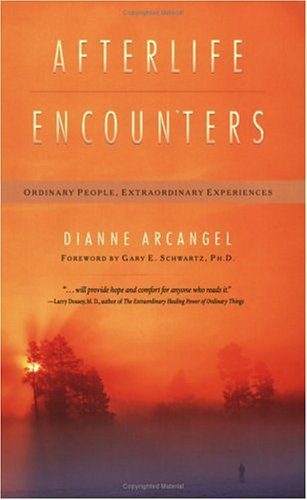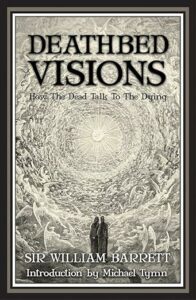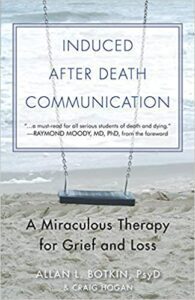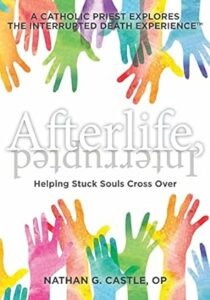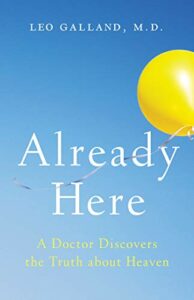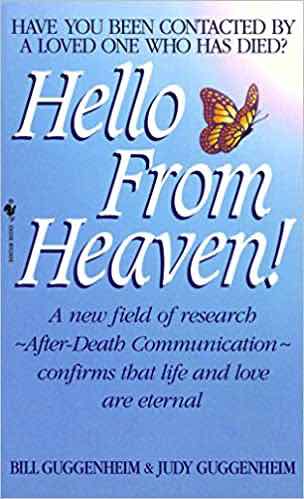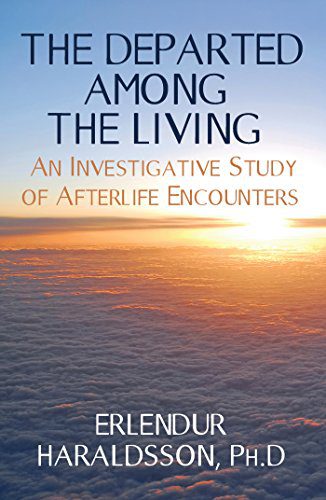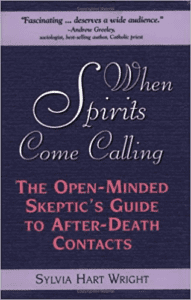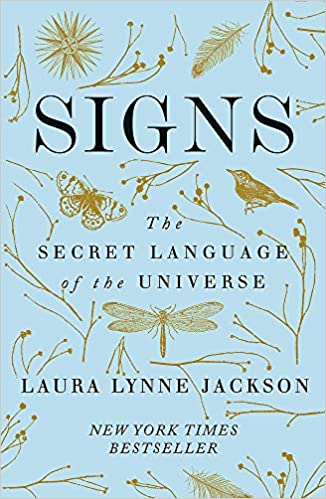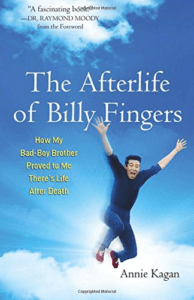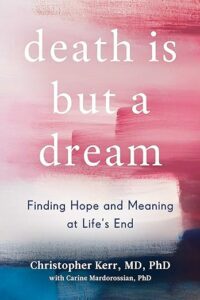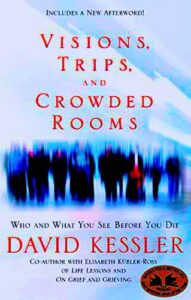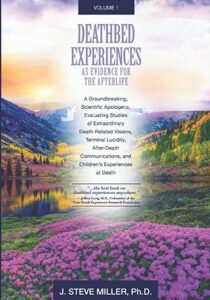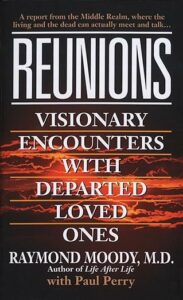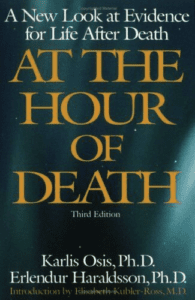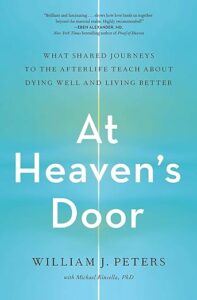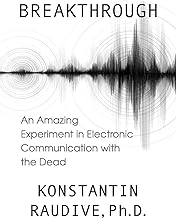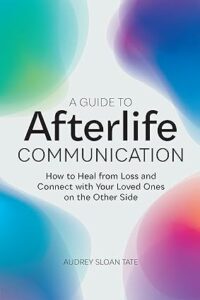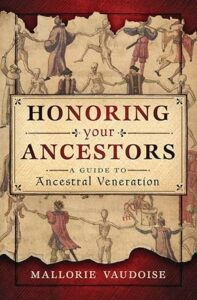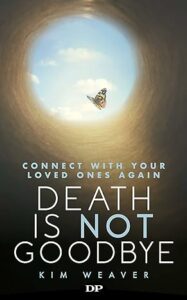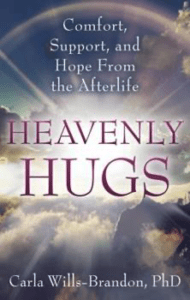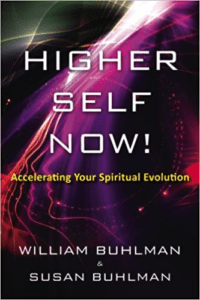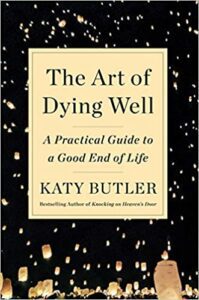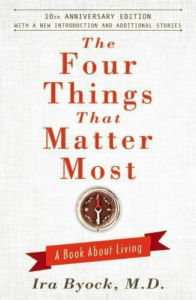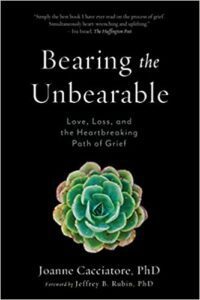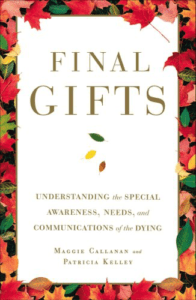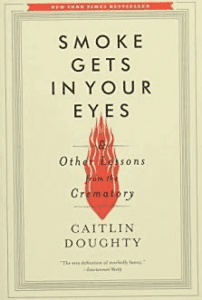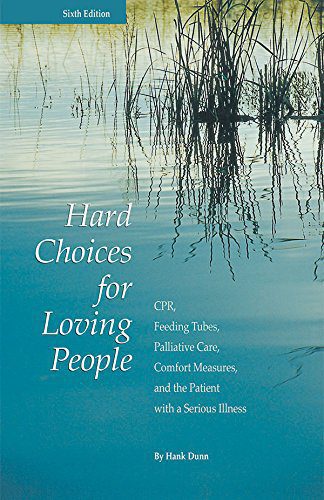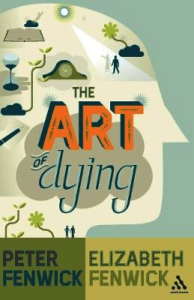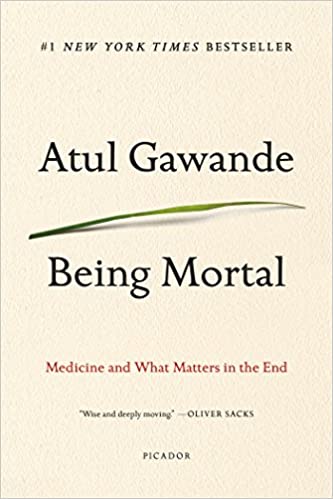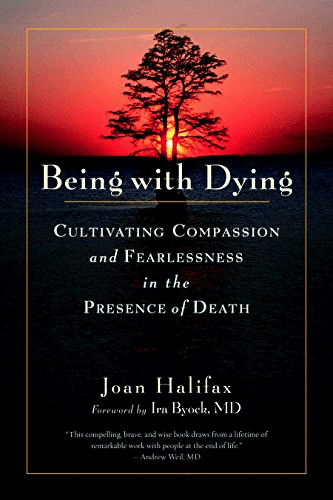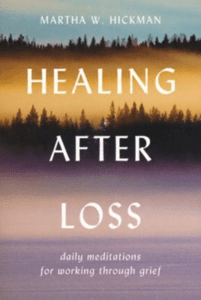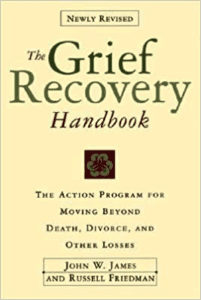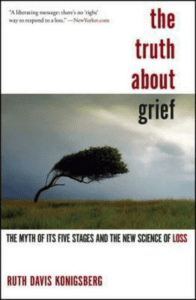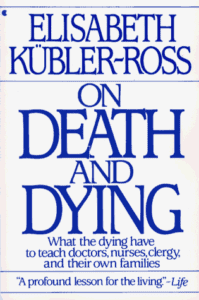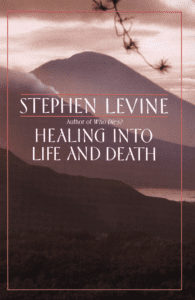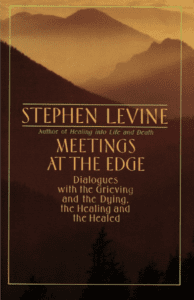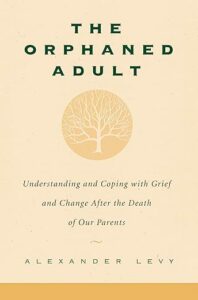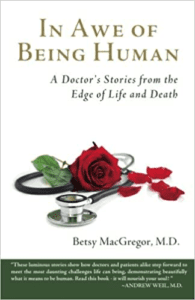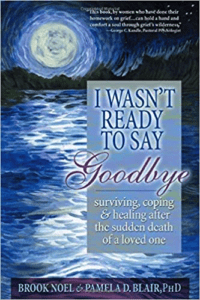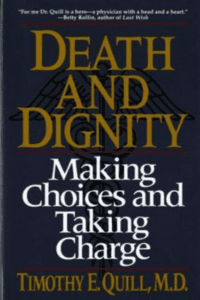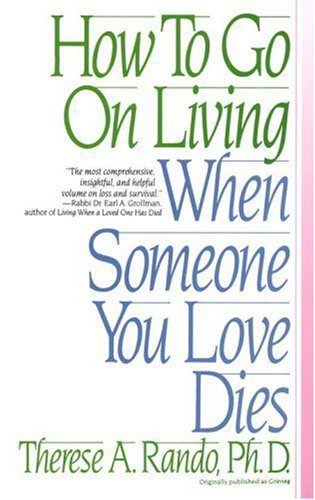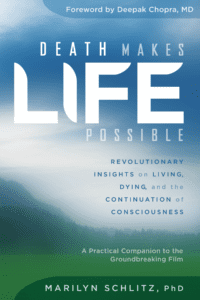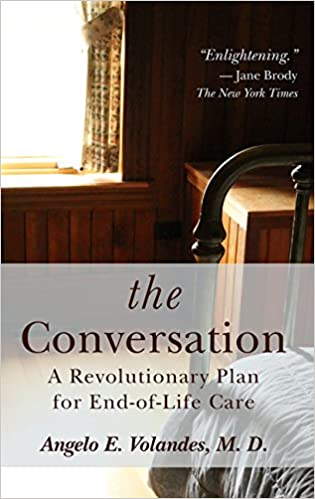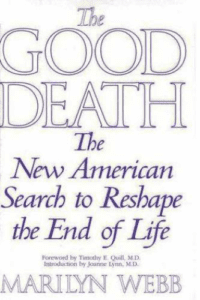Death and Dying
After-Death Communication and Support for Grieving
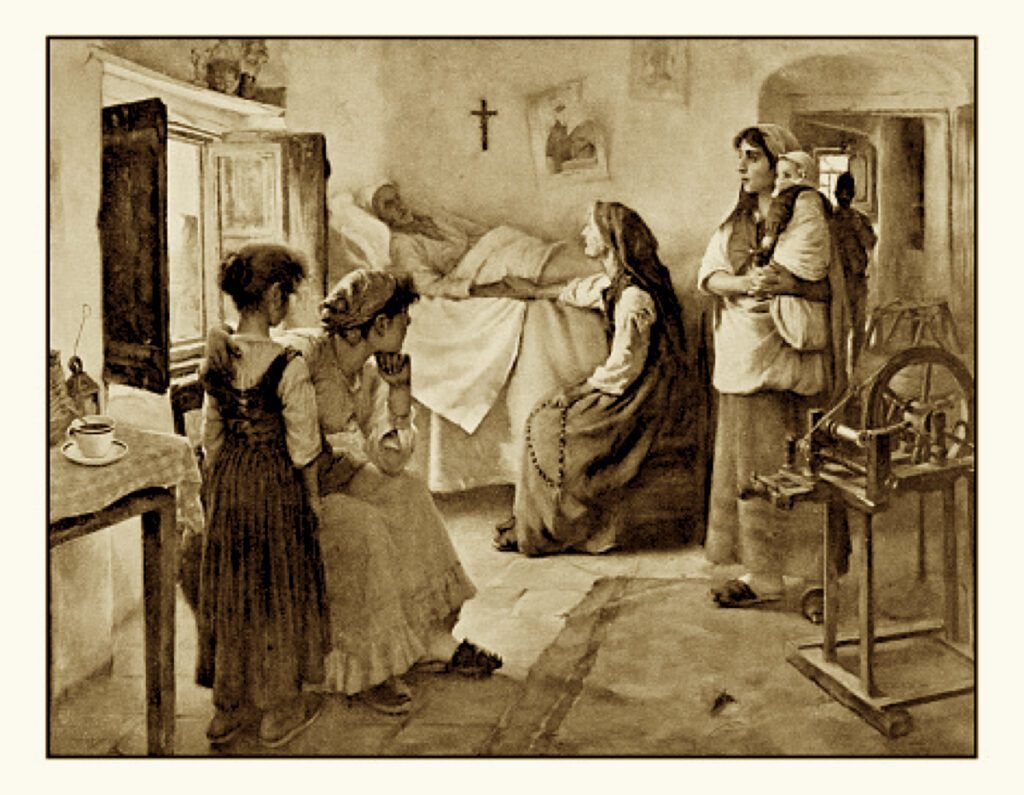
For most people, the dying process, whether it be our own or that of a loved one, is one of the most challenging times of our life. We come face to face with our spiritual nature when someone we love is dying or does die. It brings up the ultimate question: the meaning of life.
We have the opportunity to live life fully in the face of our own death and those we love with an attitude of acceptance and grace. Knowledge of the afterlife can be very helpful in this process.
The process of dying was once part of the process of living. Well into the first part of the 20th century, several generations of families often resided under the same roof, and the process of dying was part of everyone’s life. Later, illness and death moved out of the home and into the hospital or nursing home. Fortunately, when circumstances allow, caring for the terminally ill today can still be done at home, with the support of hospice care.
Deathbed Visions
An example of a deathbed vision or deathbed apparition is when a patient who sees a deceased loved one and communicates with the deceased in the presence of a caregiver. These apparitions differ from patients having medication-induced hallucinations. Typically, the patient’s mood will change to one of peace and serenity following such an experience. After the apparition, they will either recover from their illness or they will die. Death following a deathbed apparition differs from a near-death experience (NDE). In the case of the near-death experience, consciousness leaves the body temporarily and then returns to the body which then recovers.
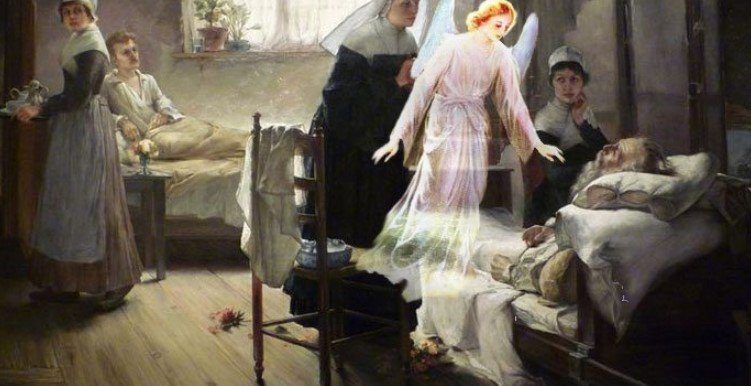
After-Death Contacts
After-death contacts are instances when the spirit of the person who died communicates with the bereaved. There is a specific kind of After-Death Contact called a Deathbed Vision or Deathbed Apparition. These involve dying patients who see and telepathically communicate with one or more departed spirits. The spirits are typically loved ones the dying patient knew before they departed. When these occur in the presence of someone in attendance with the dying patient, they can be verified.
These apparitions differ from patients having medication-induced hallucinations. Typically, the patient’s mood will change to one of peace and serenity following such an experience. After the apparition, they will either recover from their illness, or they will die.
Death following a deathbed apparition differs from a near-death experience (NDE), in which the consciousness or the soul leaves the body temporarily and then returns to the body, which recovers.
Managing Care for the Dying
The focus of physicians caring for terminally ill patients is constrained by modern medical training, record-keeping, and economics. Medical training is not very helpful in responding to personal, as opposed to the medical, nature of dying. Our current technology places the emphasis on curing, not caring. To admit that treatment is no longer possible is to admit defeat. This is demonstrated by cases in which elderly people who are clearly at the end of their life are resuscitated. For the patient and the family, the enormity of the final transition far outweighs the medical matters.
Hospice
In 1969 Dr. Elisabeth Kubler-Ross, a psychiatrist in the United States, in her book On Death and Dying gave the public a new and different way of viewing the terminal patient. This landmark book helped pave the way for the hospice care movement to take root and flourish. Her theory of the five stages of grief was embraced for many years but has largely fallen out of favor. There is no empirical evidence that her “stages of grief” theory has any validity. Everyone and every loss are different, and the bereaved should not expect their grieving to follow ordered stages.

In her book Final Gifts: Understanding the Special Awareness, Needs, and Communications of the Dying, Maggie Callanan describes the role hospice care as follows:
Hospice is the main setting in which care of the dying has evolved into a natural, patient-centered approach. This special way of care is based on two principles: the dying people should be able to choose how they spend the time they have left, and that their remaining time should be as peaceful and comfortable as possible.
Maggie Callanan describes the role of a hospice nurse as follows:
A hospice nurse is part of an interdisciplinary team—doctor, nurse, social worker, chaplain, and volunteers, with other specialists such as dieticians and physical and respiratory therapists brought in as needed—whose members play two key roles: care of the patient and care of the family. The evolution of home care has meant that many types of equipment and many functions once possible only in medical facilities—professional monitoring of patients’ vital signs and delivery of intravenous pain medications—can be provided at home.
A hospice nurse is part of an interdisciplinary team—doctor, nurse, social worker, chaplain, and volunteers, with other specialists such as dieticians and physical and respiratory therapists brought in as needed—whose members play two key roles: care of the patient and care of the family. The evolution of home care has meant that many types of equipment and many functions once possible only in medical facilities—professional monitoring of patients’ vital signs and delivery of intravenous pain medications—can be provided at home.”

Death and Dying Resources
Organizations
- Bereaved Parents of the USA (BPUSA)
BPUSA is an all-volunteer group that offers support, understanding, encouragement, and hope to fellow parents, siblings, and grandparents after the death of their loved one. BPUSA volunteers also inform and educate professionals, employers, co-workers, clergy, friends and others on the intensity and duration of parental, sibling and grandparent grief.
- Forever Family Foundation
The Forever Family Foundation integrates science and spirituality to bring comfort to the bereaved.
- Helping Parents Heal (HPH)
Helping Parents Heal is a non-profit organization dedicated to assisting bereaved parents shift towards hopefulness and peace of mind. HPH welcomes the open discussion of spiritual experiences and afterlife evidence in a non-dogmatic way.
- National Hospice and Palliative Care Organization (NHPCO)
NHPCO enhances and expands access to care that addresses holistic health and the well-being of communities. As the leading organization representing hospice and palliative care providers, NHPCO works to expand access to a proven person-centered model for healthcare—one that provides patients and their loved ones with comfort, peace, and dignity during life’s most intimate and vulnerable experiences.
- Share the Care (STC)
STC offers caregivers a guidebook, tools and educational information needed to reduce the stress, depression, isolation and economic hardship of caregiving. Caretakers can use STC to create a TEAM that can provide emotional, social and practical support for someone they know, including their caregiver and family as well as the individual team members throughout the caregiving journey no matter the challenge.
- The Conference on Death, Grief and Belief
The conference is a consortium of educators, researchers and counselors exploring religious trauma, toxic theology, spiritual elitism and any spiritual beliefs that cause psychological harm, especially when coping with death, trauma and bereavement.
- The Compassionate Friends (TCF)
The Compassionate Friends exists to provide friendship, understanding, and hope to those going through the natural grieving process after the death of a child (at any age, from any cause).
Video Presentations
- “Passing On” (PBS Documentary) (56:49 minutes)
- I See Dead People: Dreams and Visions of the Dying | Dr. Christopher Kerr | TEDxBuffalo” (17:25 minutes)
- Rethinking Death | Exploring What Happens When We Die, Parnia Lab at NYU Langone Health, 2022 (45:17 minutes)
Articles on BeAwake.com
Books about Death and Dying
Note: Book titles are linked to amazon.com, which offers numerous book reviews.
The books referenced below are a resource for you and those you love. These books fall into the following categories:
- After-Death Communication
These books provide information about making contact with the spirits of departed loved ones.
- Self-Care in the Grieving Process
These books provide information and support for one’s own grieving process. They discuss how one can best support the dying in response to their needs. Some of these books offer help to those wanting to learn how to navigate the many issues associated with the dying process.
Books about After-Death Communication
Arcangel, Dianne
Afterlife Encounters: Ordinary People, Extraordinary Experiences
by Dianne Arcangel, 332 pages (2005)
Barrett, Sir William
by Sir William Barrett, 136 pages (2011)
Botkin, Allan L., PsyD, and Hogan, Craig
by Allan L. Botkin, PsyD, and Craig Hogan (2014)
Cardoso, Anabela
Glimpses of Another World: Impressions and Reflections of an EVP Operator
by Anabela Cardoso, 223 pages (2021)
Note: EVP stands for Electronic Voice Phenomena, that is, communication from spirits and ghosts that can interact with the physical world through electronic devices.
Electronic Contact with the Dead: What do the Voices Tell Us?
by Anabela Cardoso, 146 pages (2017)
Anabela Cardoso retired as a senior career diplomat to devote her life to Instrumental and Transcommunication (ITC), a method in which communication with spirits of the deceased happen via radio equipment, televisions, computers, phones, and other electronic devices. She has received thousands of communications.
Website: Independent.Academia.edu/AnabelaCardoso3
Video: Learning From the Voices of Instrumental Trans Communication with Anabela Cardoso
Castle, Nathan G., O.P.
by Nathan G. Castle, O.P. , 199 pages (2018)
Dillard, Sherrie
I’m Still with You: Communicate, Heal & Evolve with Your Loved One on the Other Side
by Sherrie Dillard, 204 pages (2021)
Galland, Leo, M.D.
Already Here: A Doctor Discovers the Truth about Heaven by Leo Galland, M.D., 140 pages (2018)
The spirit of the author’s deceased son appears and shares ancient wisdom with his father.
Guggenheim, Bill and Guggenheim, Judy
by Bill and Judy Guggenheim, 353 pages (1995)
Website: BillGuggenheim.com
Haraldsson, Erlendur, Ph.D.
The Departed Among the Living: An Investigative Study of Afterlife Encounters
by Erlendur Haraldsson, Ph.D., 264 pages (2012)
This Icelander is known worldwide for his field research.
Hart, Silvia
by Silvia Hart “Wright, 241 pages (2002)
Website: SylviaHartwright.com
Jackson, Laura Lynne
by Laura Lynne Jackson, 288 pages (2019)
New York Times bestselling author Jackson teaches how to recognize and interpret messages from loved ones on the Other Side.
Kagan, Annie
by Annie Kagan, 191 pages (2013)
Billy’s ongoing after-death communications take his sister on an unprecedented journey in the wonder of life after death.
Kerr, Christopher, M.D., Ph.D.
by Christopher Kerr, M.D., Ph.D. with Carine Mardorossian, Ph.D., 248 pages (2020)
Dr. Kerr is a hospice doctor who draws on interviews with over 1,400 patients. He reveals that pre-death dreams and visions are extraordinary occurrences that humanize the dying process.
Website: HospiceBuffalo.com
Video: Hospice Doctor Reveals SHOCKING Deathbed Vision Accounts! (End of Life) | Dr. Christopher Kerr
Kessler, David
by David Kessler, 163 pages (2010)
Website: Grief.com
Video: Visions, Trips and Crowded Rooms – CNN – David Kessler
Miller, J. Steve, Ph.D.
by J. Steve Miller, Ph.D., 230 pages (2021)
Moody, Raymond, M.D., with Paul Perry
by Raymond Moody, M.D. with Paul Perry, 213 pages (1993)
Osis, Karlis and Haraldsson, Erlendur, Ph.D.
by Karlis Osis and Erlendur Haraldsson, Ph.D., 250 pages (1997)
There are 20 editions in 13 countries. This book is mostly about apparitions.
Peters, William J.
At Heaven’s Door: What Shared Journeys to the Afterlife Teach about Dying Well and Living Better
by William J. Peters, 247 pages (2022)
Ragan, Lyn
Signs from Pets in the Afterlife: Identifying Messages from Pets in Heaven
by Lyn Ragan, 123 pages (2015)
Number One Amazon bestseller
Website: LynRagan.com
Raudive, Konstantin, Ph.D.
by Konstantin Raudive, Ph.D., 391 pages (2021)
Originally published in 1971, this book describes the early experiments of Electronic Voice Phenomenon (EVP) also called Instrumental TransCommunication (ITC)
Seeman, Erik R., Ph.D.
by Erik R. Seeman, Ph.D., 329 pages (2019)
Tate, Audry Sloan
by Audrey Sloan Tate, 133 pages (2021)
Varga, Josie
by Josie Varga, 191 pages (2017)
Vaudoise, Mallorie
Honoring Your Ancestors: A Guide to Ancestral Veneration by Mallorie Vaudoise, 213 pages (2021)
Video: 110. Honoring Your Ancestors
Weaver, Kim
by Kim Weaver, 167 pages (2020)
Website: KimWeaverChanneling.com
Willis-Brandon, Carla, Ph.D.
by Carla Wills-Brandon, Ph.D., 248 pages (2013)
Dr. Wills-Brandon has published 13 books including a Publisher’s Weekly bestseller. She has collected nearly 2,000 cases of departing visions and visitations from deceased relatives and friends.
Buhlman, William and Susan
The second half of this book is written by Susan Buhlman regarding death and dying.
Website: Astralinfo.org
Butler, Katy
by Katy Butler, 274 pages (2019)
New York Times bestselling author
Website:KatyButler.com
Video: The Art of Dying Well
Byock, Ira, M.D.
Ira Byock, M.D. is an award-winning leader in the field of hospice and palliative medicine. He is a past president of the American Academy of Hospice and Palliative Medicine.
by Ira Byock, M.D., 244 pages (2014)
Website: IraByock.org
Cacciatore, Joanne, Ph.D.
Bearing the Unbearable: The Heartbreaking Path of Grief
by Joanne Cacciatore, Ph.D., 222 pages (2017)
Callanan, Maggie
Final Gifts: Understanding the Special Awareness, Needs, and Communications of the Dying
by Maggie Callanan & Patricia Kelley, 218 pages (1992)
Website: MaggieCallanan.com
Doughty, Caitlin
Smoke Gets in Your Eyes & Other Lessons from the Crematory
by Caitlin Doughty, 254 pages (2014)
Dunn, Hank, M.D.
Hard Choices for Loving People: CPR, Feeding Tubes, Palliative Care, Comfort Measures, and the Patient with a Serious Illness
by Hank Dunn, M.D. iv, 80 pages (1990 – 2016, 6th Edition)
Website: HankDunn.com
Fenwick, Peter and Elizabeth
The Art of Dying
by Dr. Peter Fenwick, neuropsychiatrist, and Elizabeth Fenwick, 251 pages (2008)
Gawande, Atul, M.D.
Being Mortal: Medicine and What Matters in the End
by Atul Gawande, M.D., 282 pages (2017)
#1 International bestseller and #1 New York Times bestseller. Gawande is a professor at Harvard Medical School. Named a Best Book of the Year by The Washington Post, The New York Times Book Review, NPR, and Chicago Tribune.
Halifax, Joan, Ph.D.
Being with Dying: Cultivating Compassion and Fearlessness in the Presence of Death
by Joan Halifax, Ph.D., 204 pages (2008)
Website: Upaya.org
Hickman, Martha
Healing After Loss: Daily Meditations for Working Through Grief
by Martha W. Hickman, 370 pages (1994, 2002)
James, John and Friedman, Russell
The Grief Recovery Handbook: The Action Program for Moving Beyond Death, Divorce, and Other Losses
by John W. James and Russell Friedman, 208 pages (1989 – 2017)
James and Friedman are Founders of The Grief Recovery Institute.
Website: www.griefrecoverymethod.com
Konigsberg, Ruth Davis
by Ruth Davis Konigsberg, 258 pages (2011)
Kubler-Ross, Elisabeth, M.D.
On Death and Dying: What the Dying Have to Teach Doctors, Nurses, Clergy, and Their Own Family
by Elisabeth Kubler-Ross, M.D., 286 pages (1969)
Dr. Kubler-Ross, a Swiss-American psychiatrist, was a pioneer in near-death studies. This is a landmark book in which she discusses her theory of the five stages of grief, also known as the “Kubler-Ross model.” However, her model has since fallen out of favor due to the absence of any empirical evidence that her “stages of grief” theory has validity.
Levine, Stephen
Healing into Life and Death
by Stephen Levine, 290 pages (1987)
Healing meditation techniques for working with pain and grief
Meetings at the Edge: Dialogues with the Grieving and the Dying, the Healing and the Healed
by Stephen Levine, 290 pages (1984)
Website: LevineTalks.com
Levy, Alexander
The Orphaned Adult: Understanding and Coping with Grief and Change after the Death of Our Parents
by Alexander Levy, 190 pages (1999)
This book is unusual in that it specifically addresses the loss of parents.
MacGregor, Betsy, M.D.
In Awe of Being Human: A Doctor’s Stories from the Edge of Life and Death
by Betsy MacGregor, M.D., 293 pages (2013)
Website: BetsyMacgregor.com
Noel, Brook, Ph.D.
I Wasn’t Ready to Say Goodbye: Surviving, Coping and Healing After the Sudden Death of a Loved One
by Brook Noel & Pamela D. Blair, Ph.D., 292 pages (2008)
Quill, Timothy, M.D.
Death and Dignity: Making Choices and Taking Charge
by Timothy E. Quill, M.D., 228 pages (1993)
Rando, Therese A., Ph.D.
How to Go on Living When Someone You Love Dies
by Therese A. Rando, Ph.D., 338 pages (1991)
Website: ThereseRando.com
Schlitz, Marilyn, Ph.D.
Death Makes Life Possible: Revolutionary Insights on Living, Dying, and the Continuation of Consciousness
by Marilyn Schlitz, Ph.D., 245 pages (2015)
Website: MarilynSchlitz.com
Volandes, Angelo E., M.D.
The Conversation: A Revolutionary Plan for End-of-Life Care
by Angelo E. Volandes, M.D., 220 pages (2015)
Website: AngeloVolandes.com
Webb, Maryilyn
The Good Death: New American Search to Reshape the End of Life
by Marilyn Webb, 479 pages (1997)
Marilyn Webb was nominated for a Pulitzer Prize for this book.

